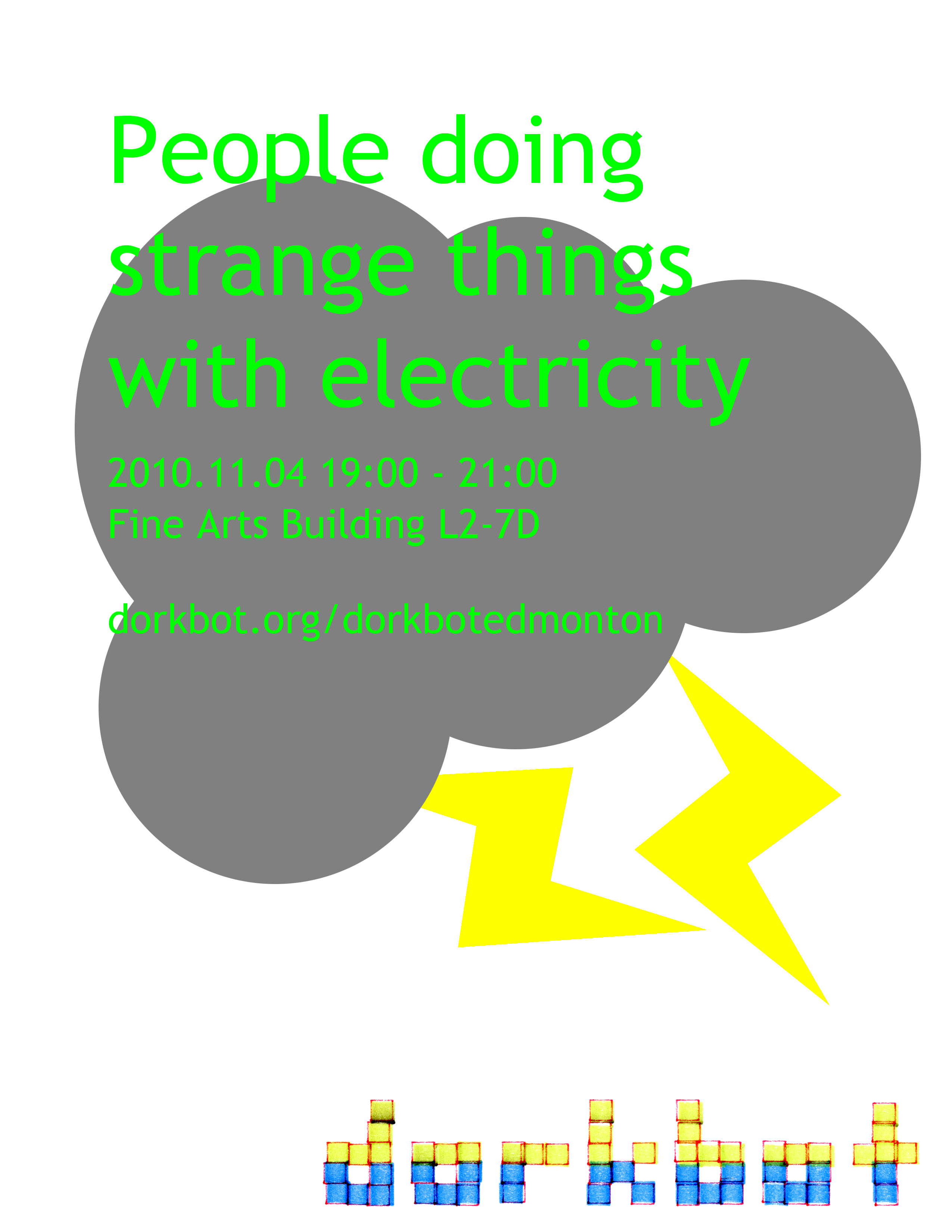

|
University of Alberta Fine Arts Building 2-7D Come to FAB 2-7D from 7-9PM on November 4th for the first meeting of the Edmonton Dorkbot. It’s no big deal, just people messing about with electronics. Bring something cool to show off if you’re working on it. Dorkbot Presentation Summary: MUGBAIT (Dan Brophy and Colin Labadie) As guitarists, we are familiar with the conventional electronic augmentation techniques for the standard electric guitar. Examples of typical augmentations include effect pedals (a.k.a. “stomp boxes”), multi-effect processing units, and more recently, signal-processing software. Because control over these augmentations is generally assigned to either the hands (when they are not engaged with the strings) or to other body parts such as the feet, the expressive potential of the augmentations is extremely limited. This limitation has inspired us to develop new augmentations that provide a greater degree of control and, consequently, a greater amount of expressivity. Last spring, we each constructed a prototype augmented guitar. Several electronic sensors—such as potentiometers, forse-sensing resisters, and photoresistors—were attached to the guitars. The data from these sensors was routed into the Max/MSP programming environment via an arduino board. That data was then used to manipulate various signal processing parameters. For our presentation, we will show the design/construction of the prototypes (both hardware and software), as well as provide a brief demonstration. Arduinome@UofA The Arduinome@UofA This project seeks to explore interactivity through a general purpose controller, the Arduinome. At this event we’ll be showing the Arduinome and presenting our current case design (to be manufactured soon). The Arduinome is based upon the Monome, a box with a grid of 8×8 LED lit buttons. The Monome communicates with a computer, and functions as a programmable controller but has no in-built functionality. Monomes are created in limited numbers so homemade Monomes powered by Arduino boards, known as Arduinomes have sprung up as a substitute for the Monome. Acquisition, and construction of the internal electronics for an Arduinome is well documented and parts are readily available. Additionally, since the software is open source additional components, such as accelerometers, can be incorporated into the design. What is lacking is a way to make a case to house the Arduinome that is as extensible and open as the software. We are working on a case design for the Arduinome that can be easily fabricated by the average person, allows easy access to the internal electronics and allows users to attach additional parts; banks of sliders or knobs, for example, to the Arduinome.
|